Otitis Media Acute (OMA) BaliMéd Hospital

Example Of Aom Otitis Media Otitis Acute Otitis Externa Images
Introduction and background. Acute otitis media (AOM) is defined as "the rapid onset of signs and symptoms of inflammation in the middle ear" [].]. Recurrent otitis media occurs when episodes of AOM are repeated on three separate and well-documented occasions in a period of the last six months or four or more occasions in the last 12 months [].A more complicated presentation of otitis media is.

Acute Otitis Media Infectious Diseases JAMA Pediatrics JAMA Network
Codes. ICD-10. ICD-10-CM Codes. Diseases of the ear and mastoid process. Diseases of middle ear and mastoid. Suppurative and unspecified otitis media (H66) Otitis media, unspecified (H66.9) H66.43. H66.9.

Otitis Media Acute (OMA) BaliMéd Hospital
DEFINITION Acute otitis media (AOM) is an acute, suppurative infectious process marked by the presence of infected middle ear fluid and inflammation of the mucosa lining the middle ear space ( picture 1 ). The infection is most frequently precipitated by impaired function of the Eustachian tube, resulting in the retention and suppuration of.

Otitis Media and Eustachian Tube Dysfunction R Kent
Acute otitis media is a bacterial or viral infection of the middle ear, usually accompanying an upper respiratory infection. Symptoms include otalgia, often with systemic symptoms (eg, fever, nausea, vomiting, diarrhea), especially in the very young. Diagnosis is based on otoscopy. Treatment is with analgesics and sometimes antibiotics.
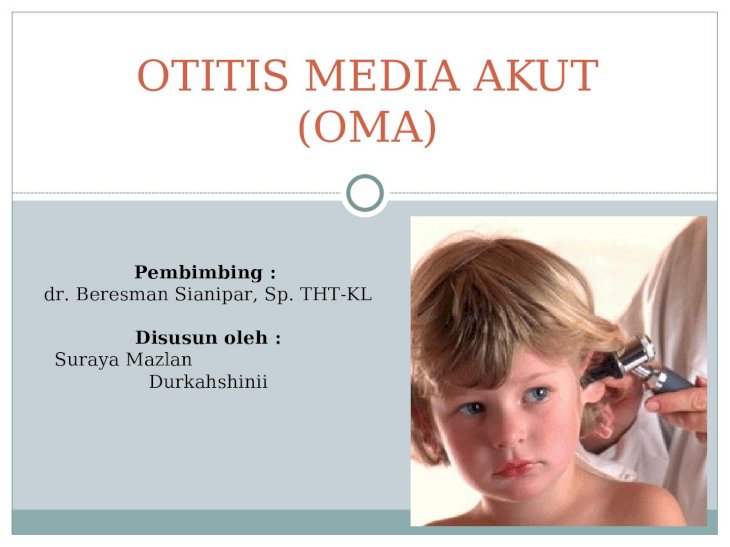
(PPT) Otitis Media Akut.ppt DOKUMEN.TIPS
Otitis media, unspecified, right ear. H66.91 is a billable/specific ICD-10-CM code that can be used to indicate a diagnosis for reimbursement purposes. The 2024 edition of ICD-10-CM H66.91 became effective on October 1, 2023. This is the American ICD-10-CM version of H66.91 - other international versions of ICD-10 H66.91 may differ.
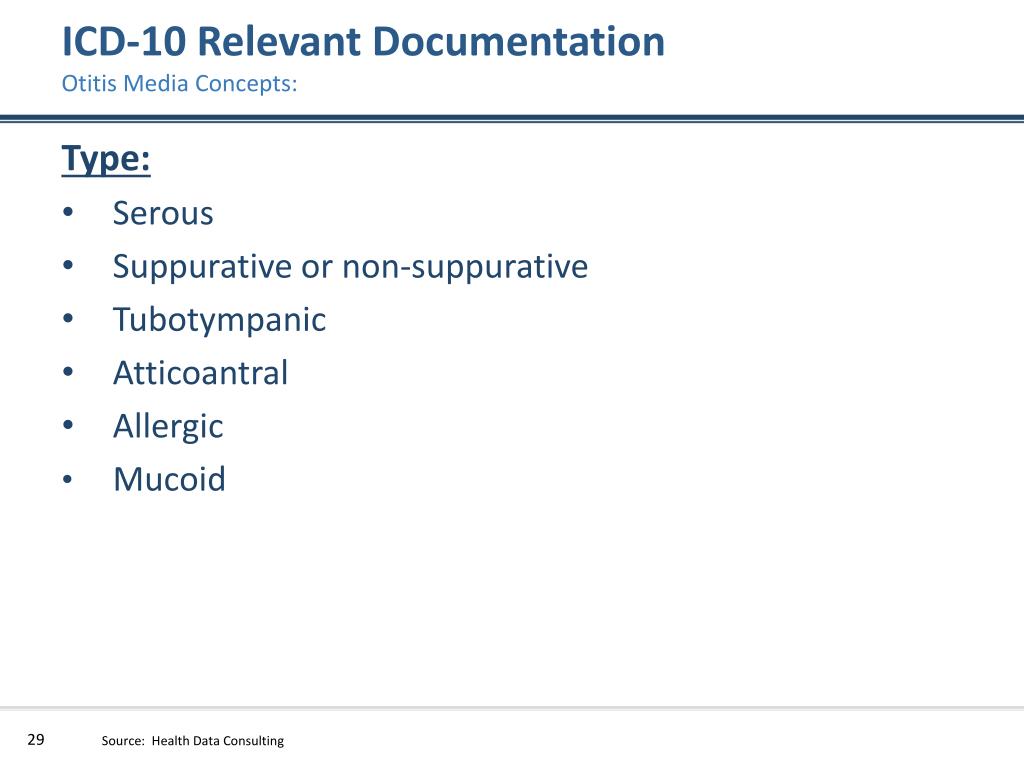
Icd10dm Code For Acute And Chronic Otitis Media
Acute otitis media is diagnosed in patients with acute onset, presence of middle ear effusion, physical evidence of middle ear inflammation, and symptoms such as pain, irritability, or fever.

Akut Otitis Media Kulak Burun Boğaz Ses Hastalıkları
Acute otitis media (AOM) is the most common diagnosis in childhood acute sick visits. By three years of age, 50% to 85% of children will have at least one episode of AOM. Symptoms may include ear.

Pathway Otitis Media Akut PDF
H66.90 is a billable/specific ICD-10-CM code that can be used to indicate a diagnosis for reimbursement purposes. The 2024 edition of ICD-10-CM H66.90 became effective on October 1, 2023. This is the American ICD-10-CM version of H66.90 - other international versions of ICD-10 H66.90 may differ.
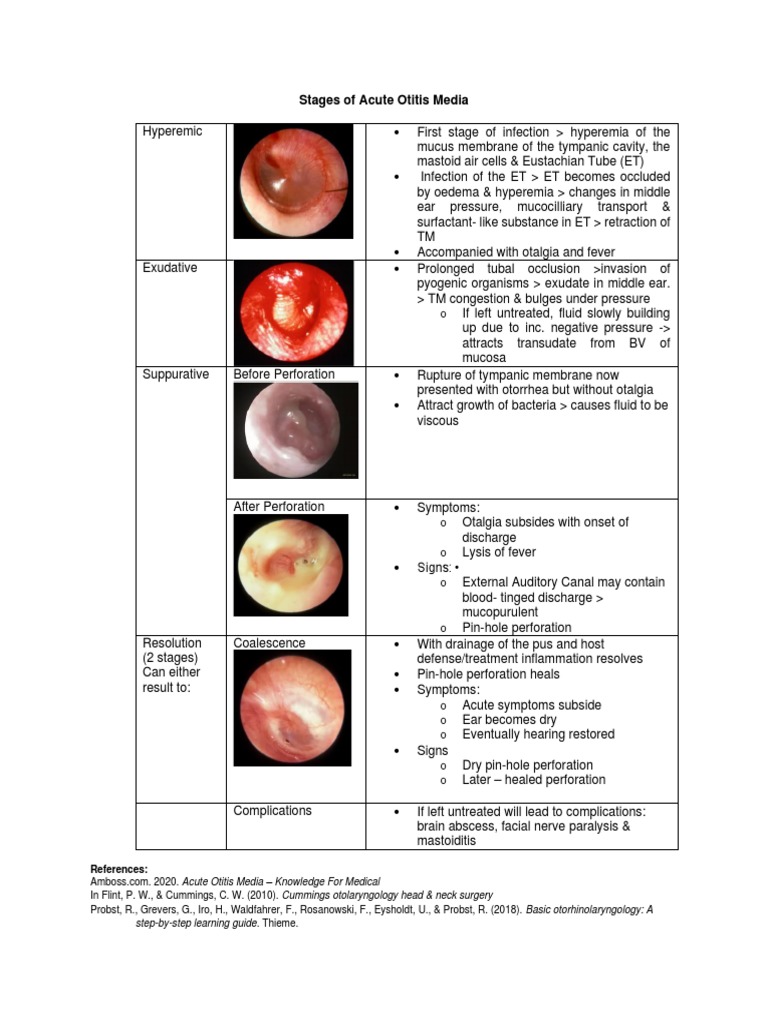
Stages of Acute Otitis Media PDF Surgical Specialties Health Sciences
500 results found. Showing 1-25: ICD-10-CM Diagnosis Code H65.19. Other acute nonsuppurative otitis media. Acute and subacute mucoid otitis media; Acute and subacute nonsuppurative otitis media NOS; Acute and subacute sanguinous otitis media; Acute and subacute seromucinous otitis media. ICD-10-CM Diagnosis Code H65.01 [convert to ICD-9-CM]
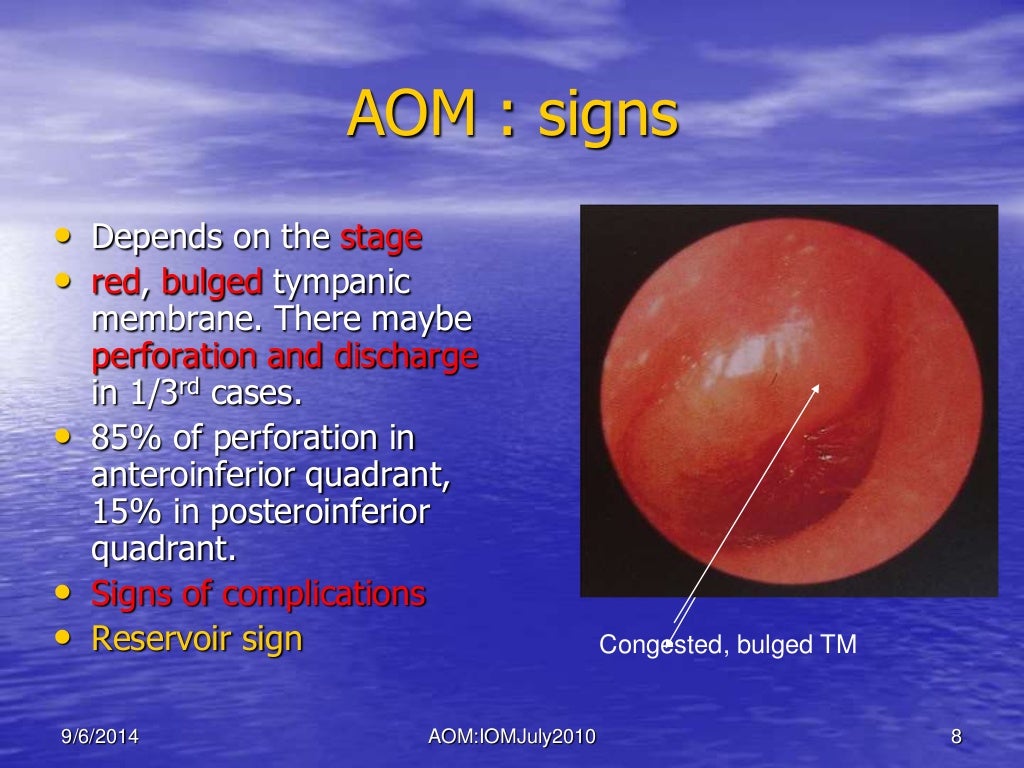
Acute otitis media
Practice Essentials. In the United States, acute otitis media (AOM), defined by convention as the first 3 weeks of a process in which the middle ear shows the signs and symptoms of acute inflammation, is the most common affliction necessitating medical therapy for children younger than 5 years. [ 1, 2, 3] See the image below.
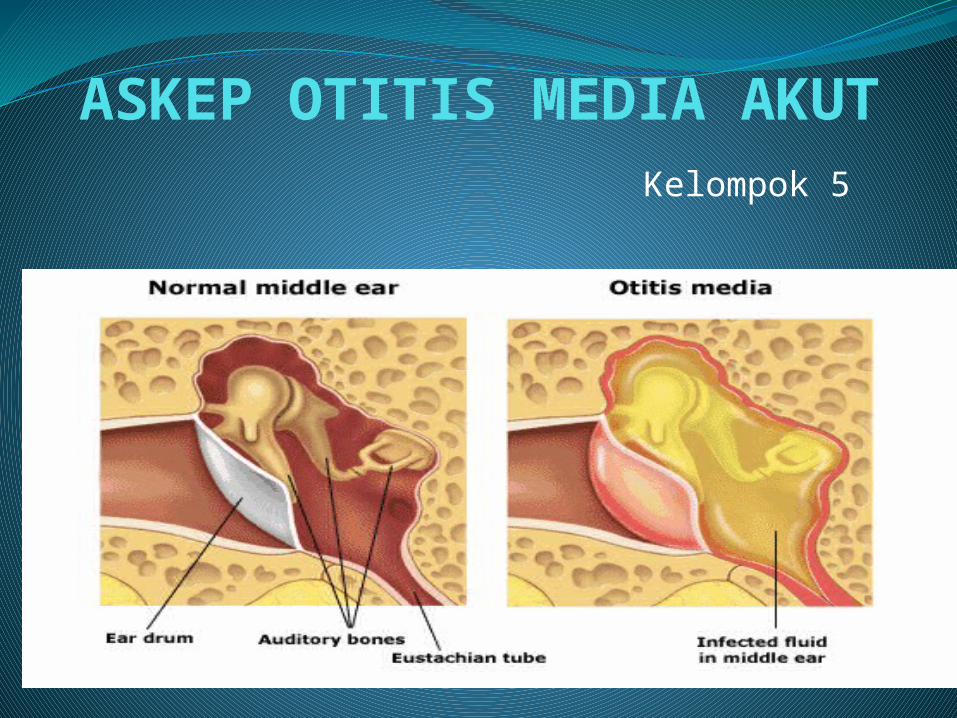
(PPTX) Ppt Askep Otitis Media Akut
Acute sinusitis. Approximate Synonyms. Acute sinusitis. ICD-10-CM J01.90 is grouped within Diagnostic Related Group (s) (MS-DRG v41.0): 152 Otitis media and uri with mcc. 153 Otitis media and uri without mcc. Convert J01.90 to ICD-9-CM. Code History. 2016 (effective 10/1/2015): New code (first year of non-draft ICD-10-CM)

Otitis Media Akut PDF
Acute otitis media is the second most common pediatric diagnosis in the emergency department, following upper respiratory infections. Although otitis media can occur at any age, it is most commonly seen between the ages of 6 to 24 months. Infection of the middle ear can be viral, bacterial, or coinfection. The most common bacterial organisms.

Otitis media akut
Acute otitis media is a bacterial or viral infection of the middle ear. Acute otitis media often occurs in people with a cold or allergies. The infected ear is painful. Doctors examine the eardrum to make the diagnosis. Certain routine childhood vaccinations can reduce the risk of acute otitis media. The infection is sometimes treated with.

pathway otitis media kronik (OMK)
Acute otitis media is defined as an infection of the middle ear space. It is a spectrum of diseases that includes acute otitis media (AOM), chronic suppurative otitis media (CSOM), and otitis media with effusion (OME). Acute otitis media is the second most common pediatric diagnosis in the emergency department, following upper respiratory infections. Although otitis media can occur at any age.
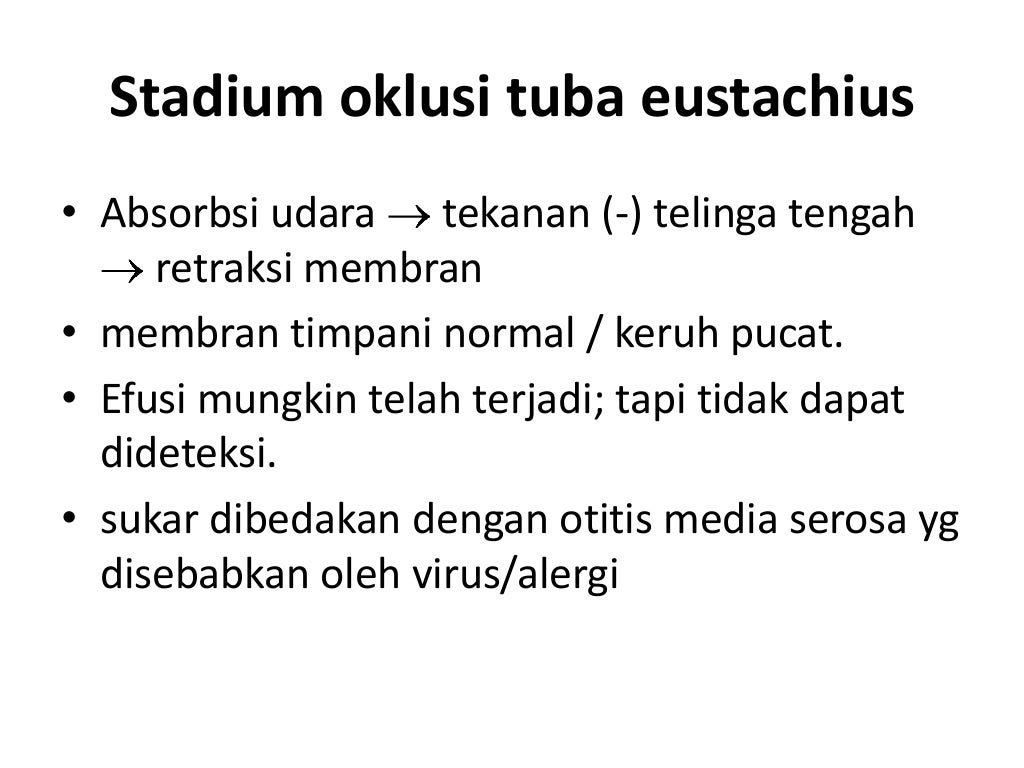
Otitis media akut
The terms that health care professionals use to describe children's ear conditions can be confusing. There are 3 common terms. (1) Acute otitis media (AOM) is the term used for middle ear infections. (2) Otitis media with effusion occurs when there is fluid in the middle ear space that is not infected. This does not require antibiotics.

Acute otitis media
Applicable To. Acute and subacute mucoid otitis media; Acute and subacute nonsuppurative otitis media NOS; Acute and subacute sanguinous otitis media